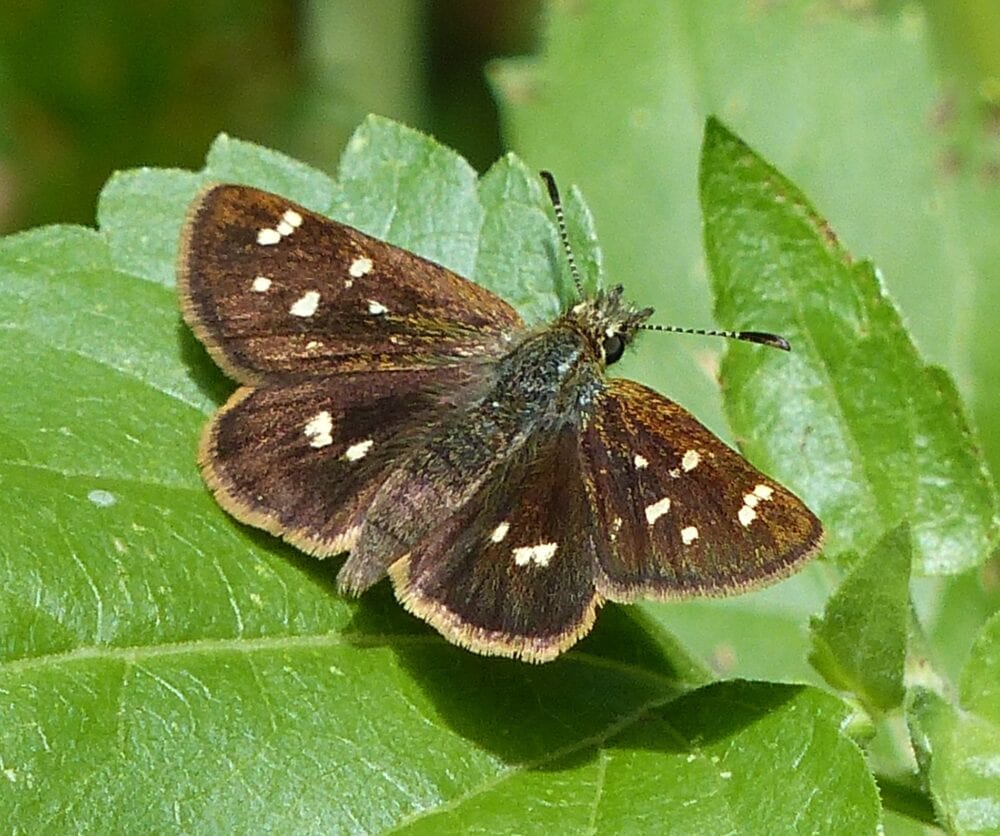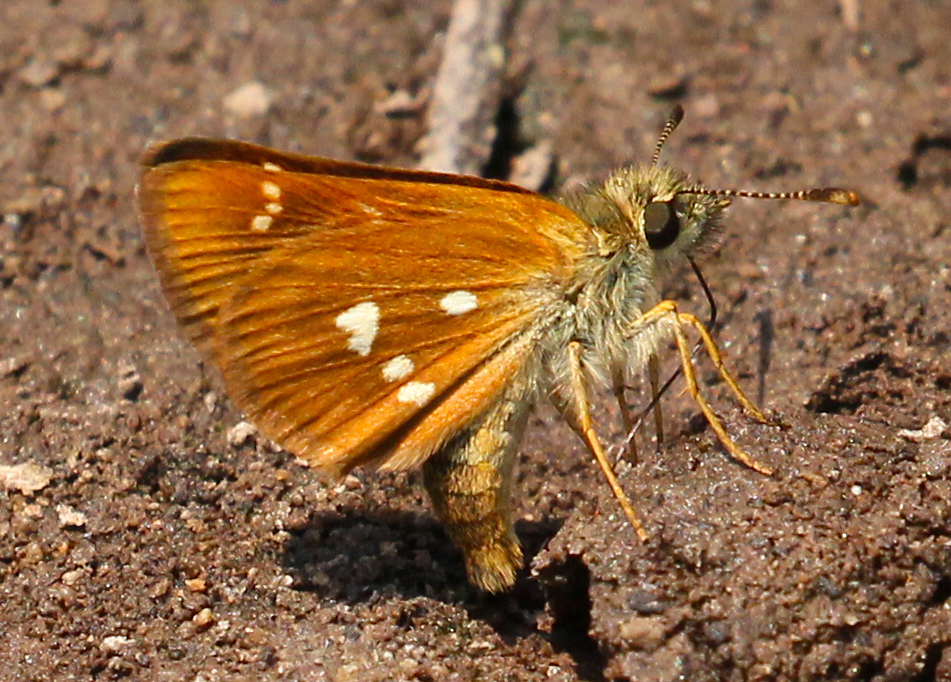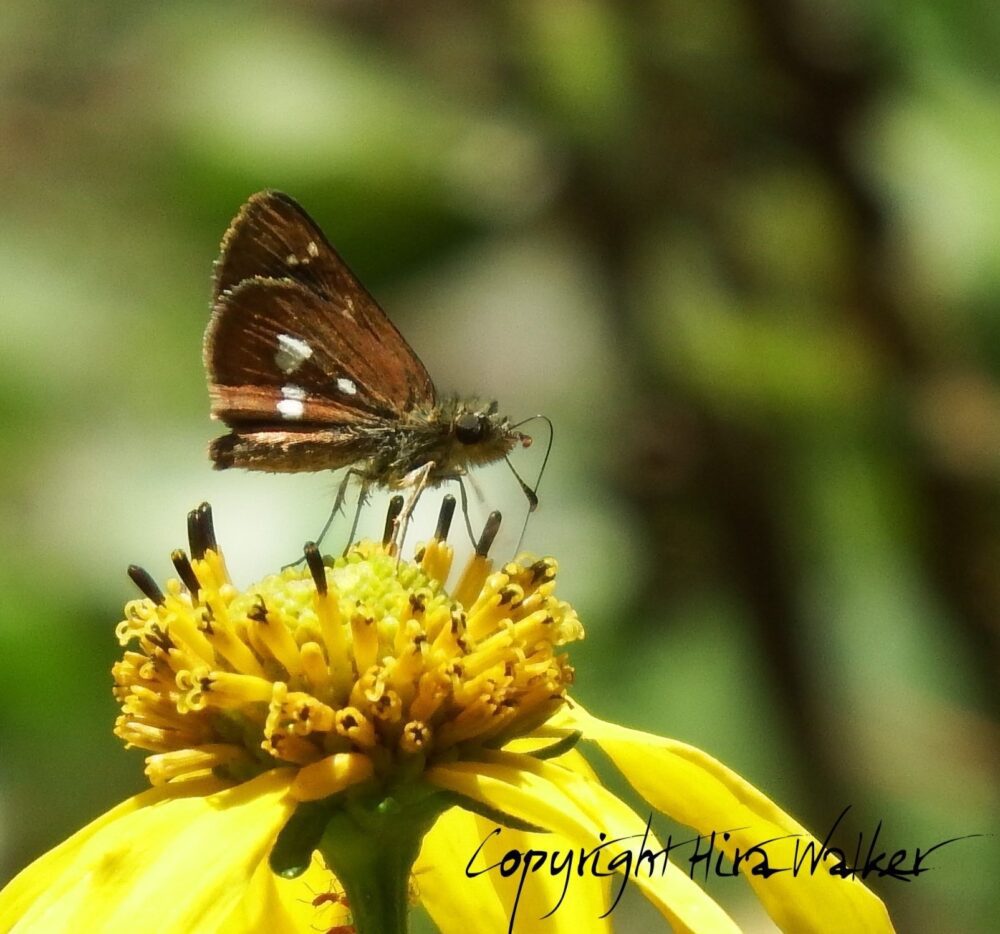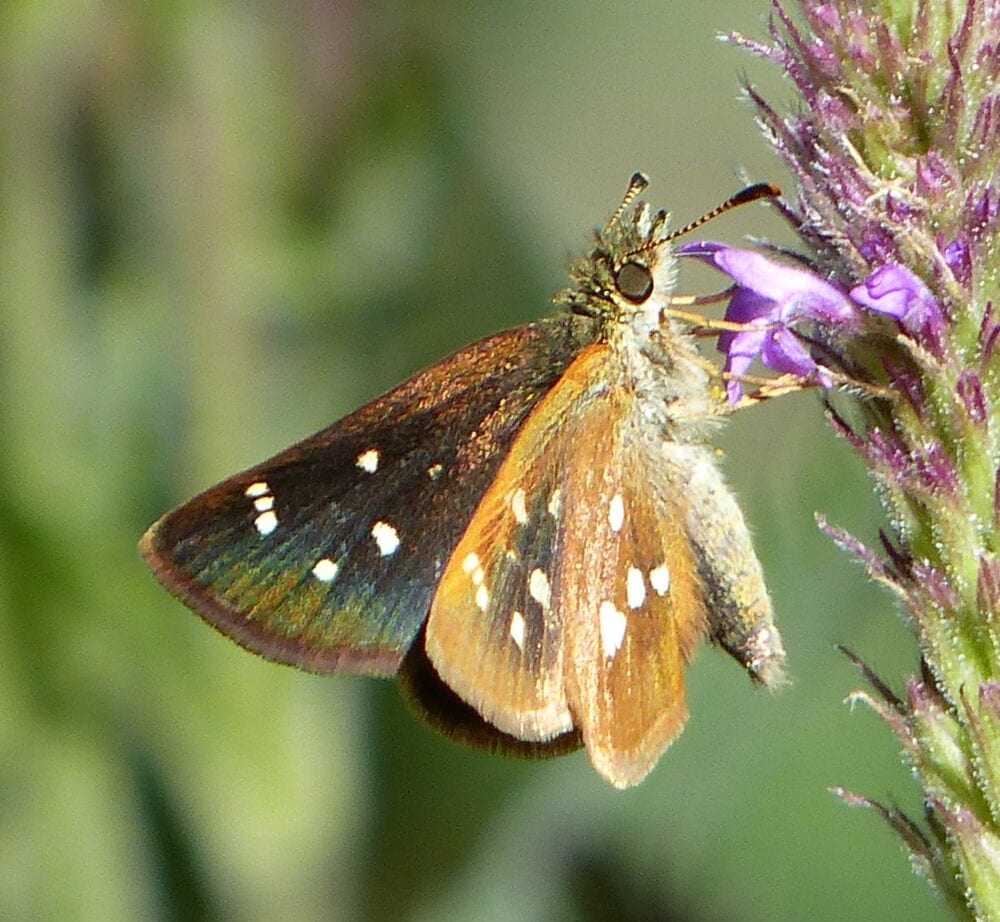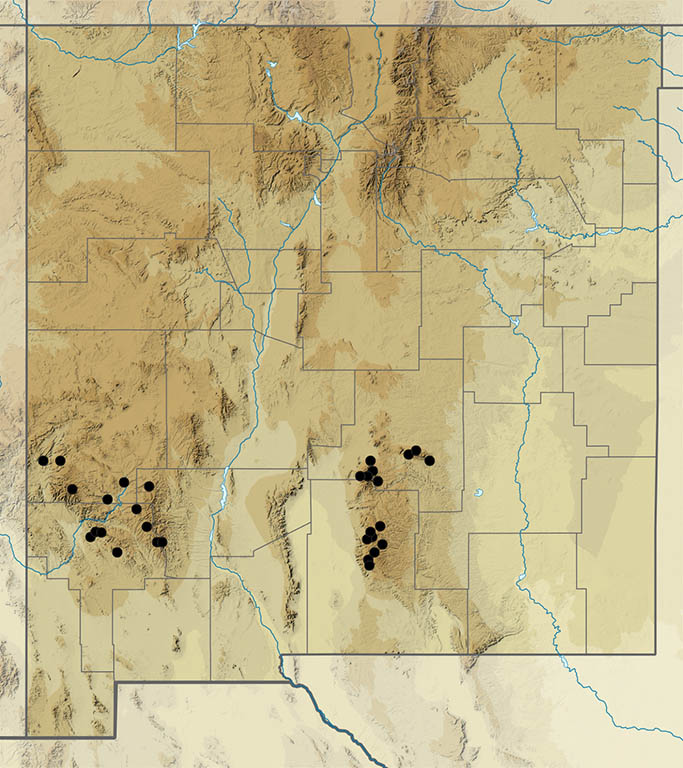by Steven J. Cary
Skippers (Hesperiidae). About a third of our butterfly fauna, more than 100 species, belongs to this family, which is subdivided into six subfamilies in the US: Eudaminae, Tagiadinae, Pyrrhopyginae, Pyrginae, Heteropterinae, and Hesperiinae. Of those six subfamilies, five are known from New Mexico and the sixth (Tagiadinae, represented by Celaenorrhinus fritzgaertneri) has been taken on the Arizona side of Cottonwood Canyon, Peloncillo Mountains. Therefore, it is likely that eventually all six will be known from our state. The tribe Megathymini has been considered a seventh subfamily, but recent genetic work (Li, et al, 2019) shows it belongs in the Hesperiinae. Skippers earned their name because of their rapid, skipping flight, which is powered by a heavily-muscled thorax. All skippers have antennal clubs that are distinctively bent, curved or hooked. Larvae silk leaves together for nests; larvae overwinter. Most subfamilies have distinct larval food preferences. Updated November 30, 2022
Skipperlings (Hesperiidae: Heteropterinae). This subfamily is very diverse in the Neotropics, but includes only two species in New Mexico. They have adult features of Spread-Wing Skippers (Pyrginae), but they also have grass-feeding larvae like the Folded-Wing Skippers (Hesperiinae). Skipperlings are tiny, among our smallest butterflies.
- Russet Skipperling (Piruna pirus)
- Four-Spotted Skipperling (Piruna polingii)
Piruna pirus (W. H. Edwards 1878) Russet Skipperling (updated March 25, 2023)
Description. Russet Skippering is small, with immaculate, tawny copper on the hindwing beneath. On the upperside it is dark, glossy brown with small white forewing spots. Range and Habitat. Piruna pirus lives in meadows and along stream sides in the central and southern Rockies, including New Mexico (counties: Be,Ca,Co,Gr,LA,Mo,RA,Sv,SJ,SM,SF,So,Ta,To,Un), usually 6000 to 9200′ elevation. Life History. Scott (1992) described the early stages of this butterfly. He identified 16 broadleaf grasses as larval hosts in Colorado, including Dactylis glomerata, Agropyron repens, Agropyron trachycaulum, Bromus inermis, Bromis lanatipes and Phleum pratense. These or other “hay” grasses are likely hosts in New Mexico, too. Flight. Russet Skipperling completes one generation per year with adults about from May 30 to September 4, peaking in July. Adults fly near the ground. They feed at wet sand and nectar at flowers such as Rudbeckia laciniata. Comments. Despite similar habitat preferences, our two Piruna species seem to be allopatric – their ranges do not overlap. They approach each other in the Mogollon Rim complex (Ca,Gr), but they have not been found together.
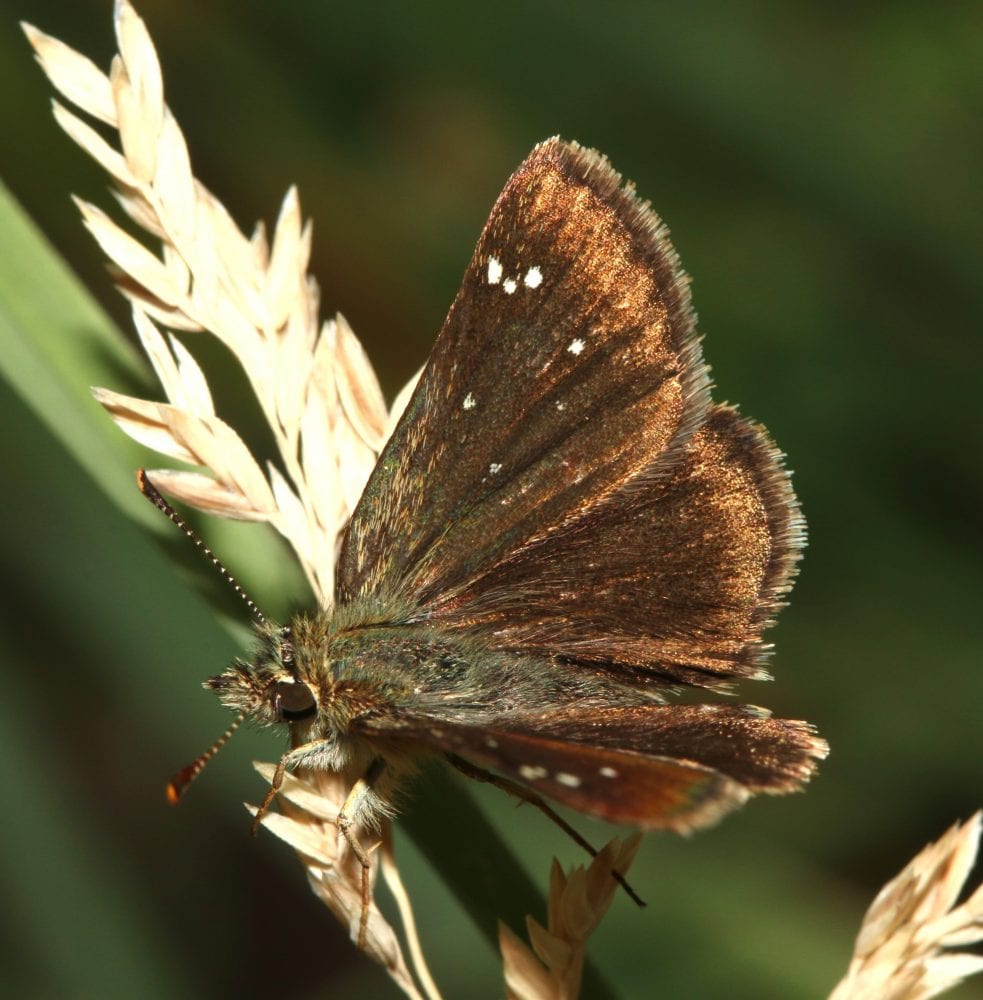
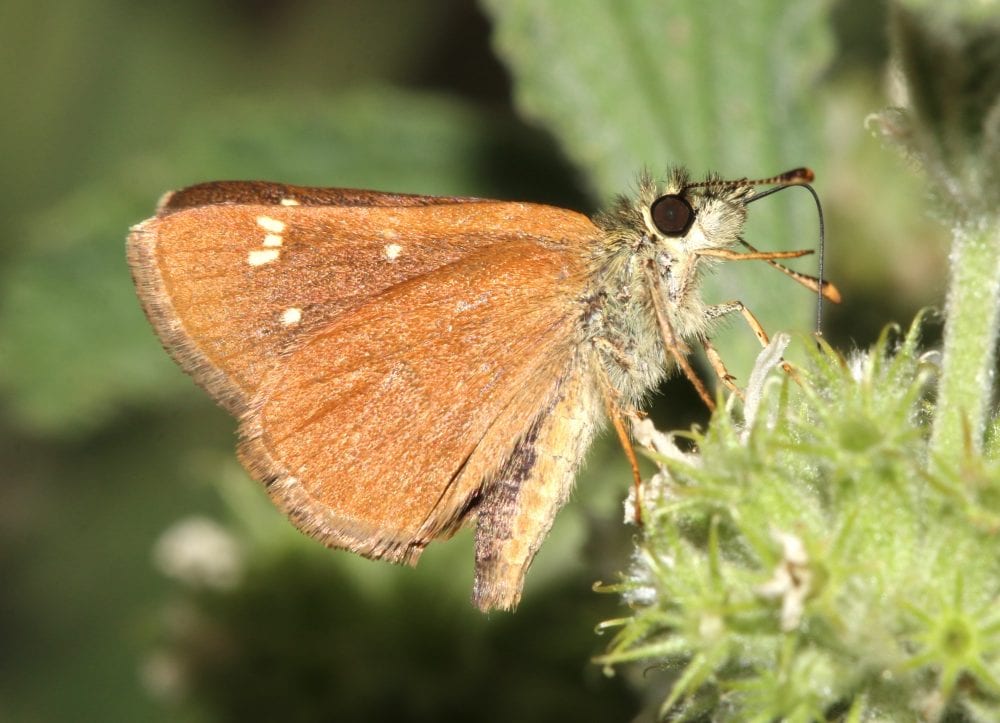
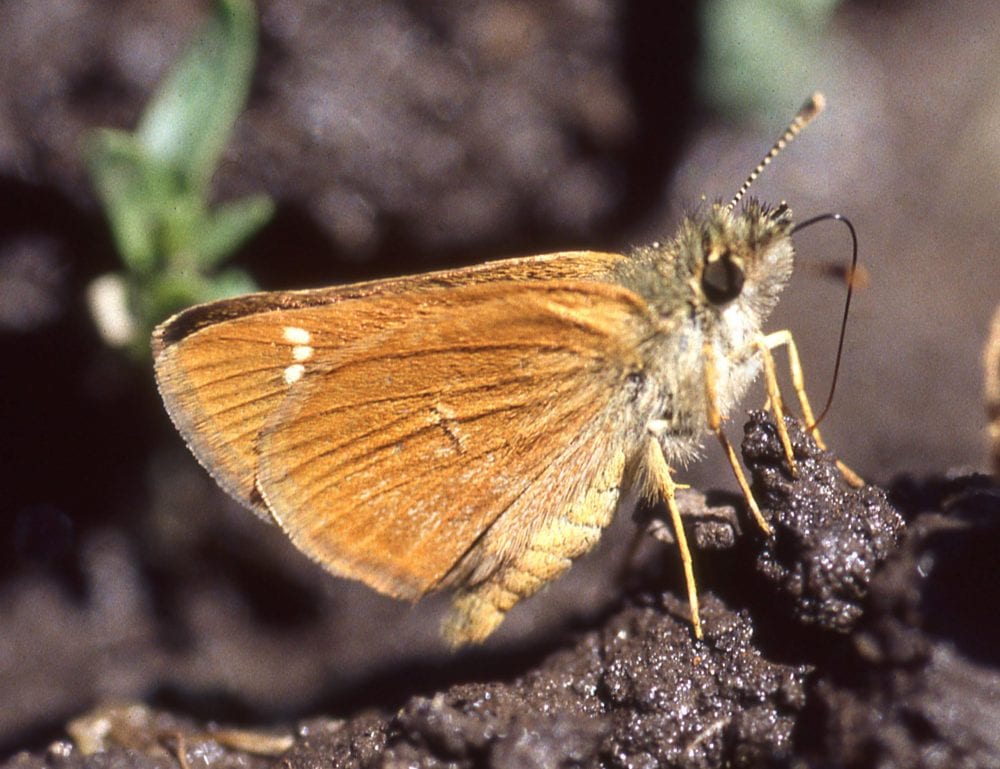
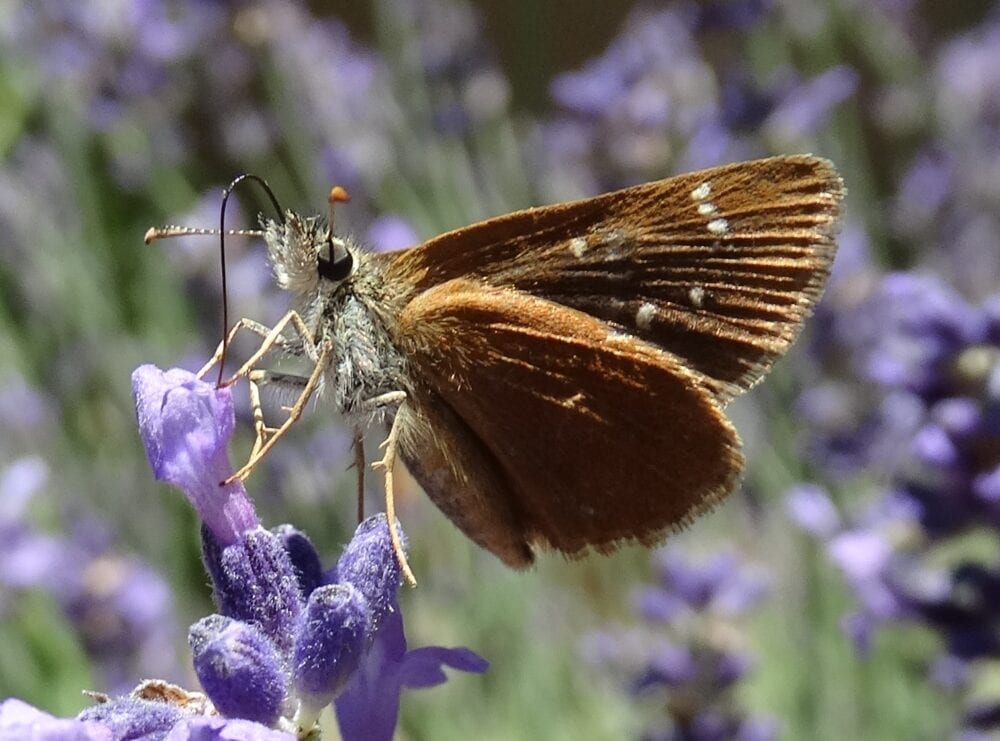
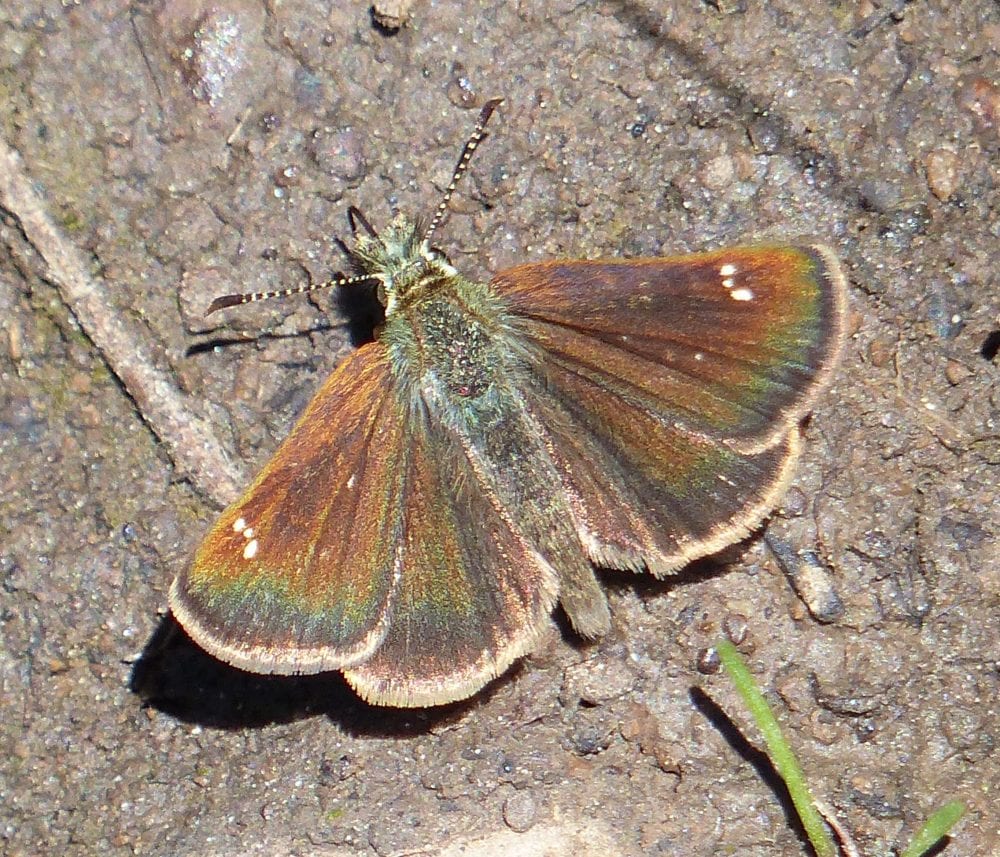
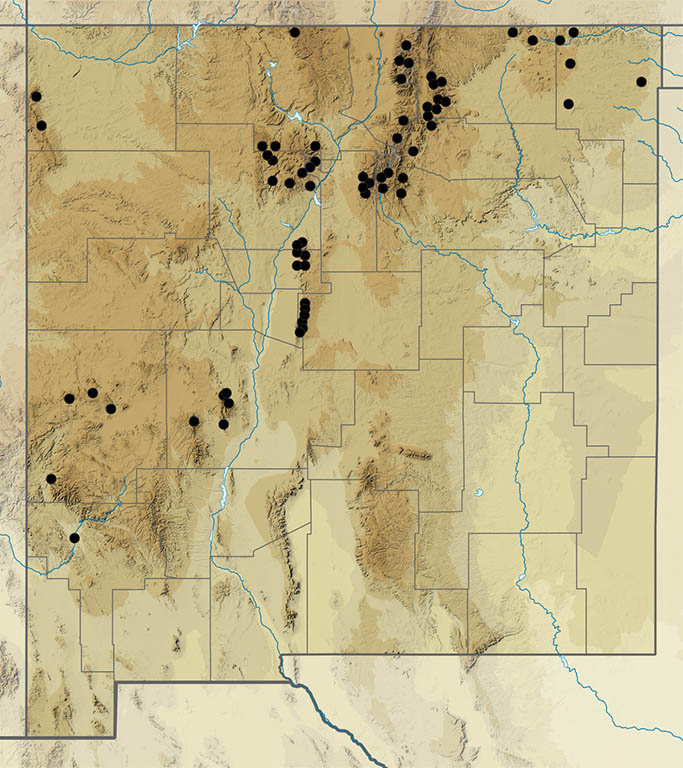
Piruna polingii (W. Barnes 1900) Four-Spotted Skipperling (updated March 25, 2023)
Description. Like Russet Skipperling in size and ground color, Four-Spotted Skipperling has white spots on the dorsal and ventral surfaces of all four wings. Range and Habitat. Piruna polingii replaces Piruna pirus in southern New Mexico. Its northern limits approach Piruna pirus in southern Arizona and southern New Mexico (counties: Ca,Gr,Si). In south-central New Mexico it occupies the Capitan and Sacramento Mountains (counties: Li,Ot). It also occurs south into Mexico along the Sierra Madre. Its habitat is grassy Transition Zone stream edges and wet meadows from 6500 to 9000′ elevation. Life History. Brock (1993) confirmed that larvae feed on Dactylis glomerata and Bromus inermis (Poaceae) in southeast Arizona. Flight. There is one annual brood in New Mexico, flying from June 7 to August 22, peaking in July. Adults frequent grassy meadows and montane riparian areas, and are fond of nectar (e.g., cutleaf coneflower) and damp soil. Comments. A report from the Sandia Mountains (Be) is dubious.
